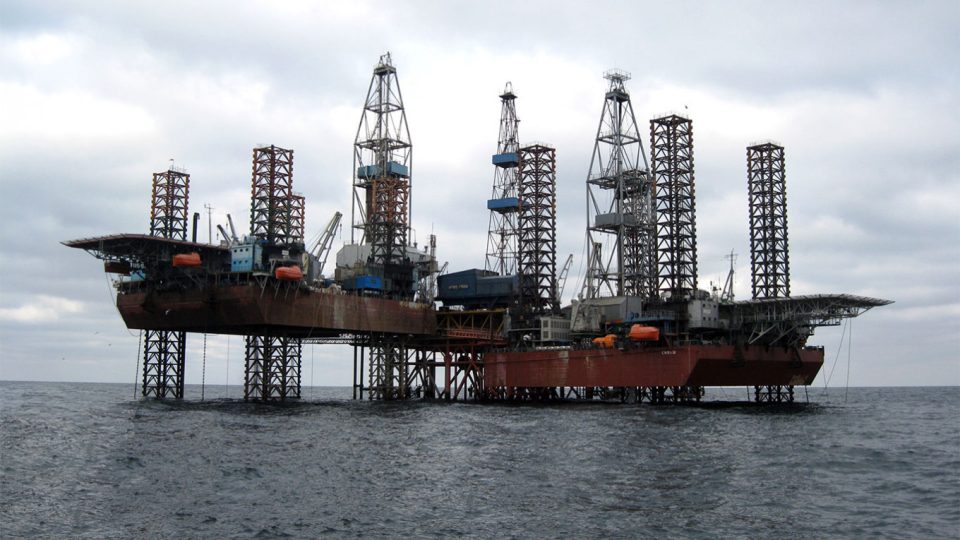Ukraine says it has successfully retaken control of four gas drilling platforms in the northern Black Sea, close to the Crimean Peninsula.
Video of the operation, which Ukraine says took place last month, shows special forces removing Russian military equipment.
Russia seized control of the so-called Boyko Towers in 2015, shortly after it illegally annexed Crimea.
There has been a battle for control of these strategic waters since last year.
A video and statement released by Ukraine’s military intelligence, entitled Battle for the Sea, offer a rare glimpse into this sphere of the conflict.
In the video, which the BBC cannot verify, rigid inflatable boats are seen speeding across the Black Sea, carrying teams of Ukrainian special forces.
At one point, the boats pass close to Snake Island, also known as Zmiinyi Island, which was captured by Russia on the first day of its full-scale invasion last year and recaptured four months later.
Troops are then seen clambering onto one of the platforms and removing Russian supplies, as well as vital radar equipment.
“On the drilling platforms, the Russians set up warehouses with ammunition and fuel for helicopters,” the video commentary says.
“They also placed radar stations on the towers with the help of which they monitored the situation in the entire Black Sea.”
The radar in question, a Neva-B, was acting as a repeater, expanding Russia’s field of vision in the vital waters between Ukraine and the Crimean Peninsula.
At one point, the video appears to show frantic efforts by Ukrainian troops to defend themselves against a Russian Su-30 fighter jet, circling overhead.
There are celebrations as a shoulder-held anti-aircraft missile is launched, causing the jet to retreat.
There’s no obvious evidence of any further combat, but a spokesman for military intelligence said Russian troops on one of the platforms had been killed.
According to military intelligence, the operation was full of drama, including a 14-hour search for a soldier (“special agent Konan”), who fell overboard but was finally rescued after being spotted by a drone.
Ukraine’s account of the operation cannot be independently verified, but on 27 August, Britain’s Ministry of Defence (MoD) tweeted that there had been “skirmishes” around the gas platforms.
‘Unseen battle for control’
“Last week, a Russian combat jet shot at a Ukrainian military small boat operating near a platform in the north-west of the sea,” the MoD noted, in a possible reference to the operation.
It’s all part of a largely unseen battle for control of the northern Black Sea, which both sides see as vital.
The platforms commanded valuable hydrocarbon resources, the MoD said, and could be used as “forward deployment bases, helicopter landing sites and to position long-range missile systems.”
In recent days, Russia has more than once claimed to have intercepted small boats carrying Ukrainian troops off the west coast of the Crimean Peninsula.
Last year, control of Snake Island and the Boyko platforms – named after Ukraine’s former minister of energy – was all seen as part of Russia’s threat to Ukraine’s Black Sea ports.
Now it’s Russia that appears to have most to worry about, as Ukrainian drones and commandos launch raids on the northwest corner of Crimea, damaging a radar base on the Tarkhankut Peninsula and even planting a Ukrainian flag during an operation to mark Independence Day, on 24 August.
Serhiy Kuzan, of the Kyiv-based Ukrainian Security and Cooperation Centre, called the Boyko towers mission “a daring long-distance operation.”
“We beat the Russians because we were the first to reach the towers and remove the Russian eyes and ears,” he said, “before the Russians sent their aircraft to protect their equipment.”
Kyiv has made no secret of its intention to reclaim the Crimean Peninsula.
“Russia also lost the ability to fully control the waters of the Black Sea,” the video commentary says, “which makes Ukraine many nautical miles closer to the return of Crimea.”
It may be a distant prospect for now, but reducing Russia’s ability to see what’s going on in the northern Black Sea is seen as vital for gradually weakening Moscow’s grip.

